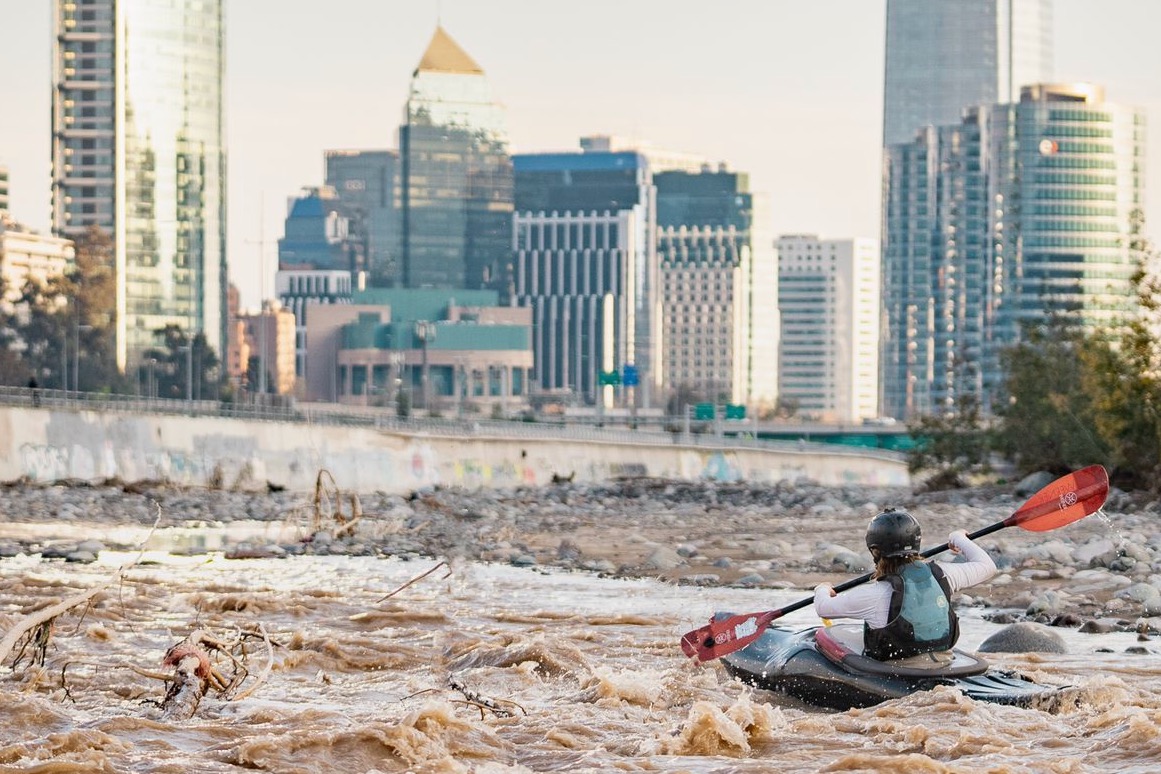 Southern right whale calf stranded in Melinka, Aysén region, dead due to interaction with fishing nets and possible collision with a boat. Photo: B. Galletti
Southern right whale calf stranded in Melinka, Aysén region, dead due to interaction with fishing nets and possible collision with a boat. Photo: B. Galletti
By Elsa Cabrera and Juan Carlos Cárdenas
The stranding of a dead whale due to human causes is always regrettable. It represents the loss of individuals from species that haven't yet recovered from the impacts of commercial whaling. But when a southern right whale calf from the southeastern Pacific population dies due to human activities, it is undoubtedly a tragedy.
With an estimated population of less than 50 mature individuals, this population was classified as critically endangered by the International Union for the Conservation of Nature (IUCN) in 2008, following a series of sighting records gathered by the Chilean Marine Mammal Sightings Network created by the Cetacea Conservation Center (CCC) in 2003.
Therefore, the calf killed by entanglement in fishing nets and possible collision with a marine vessel in Melinka (Aysen region, Chilean Patagonia) is of utmost gravity for the planet's biodiversity. Its loss significantly impacts its long-term recovery by reducing the growth rate and genetic diversity of a population already in danger of disappearing.
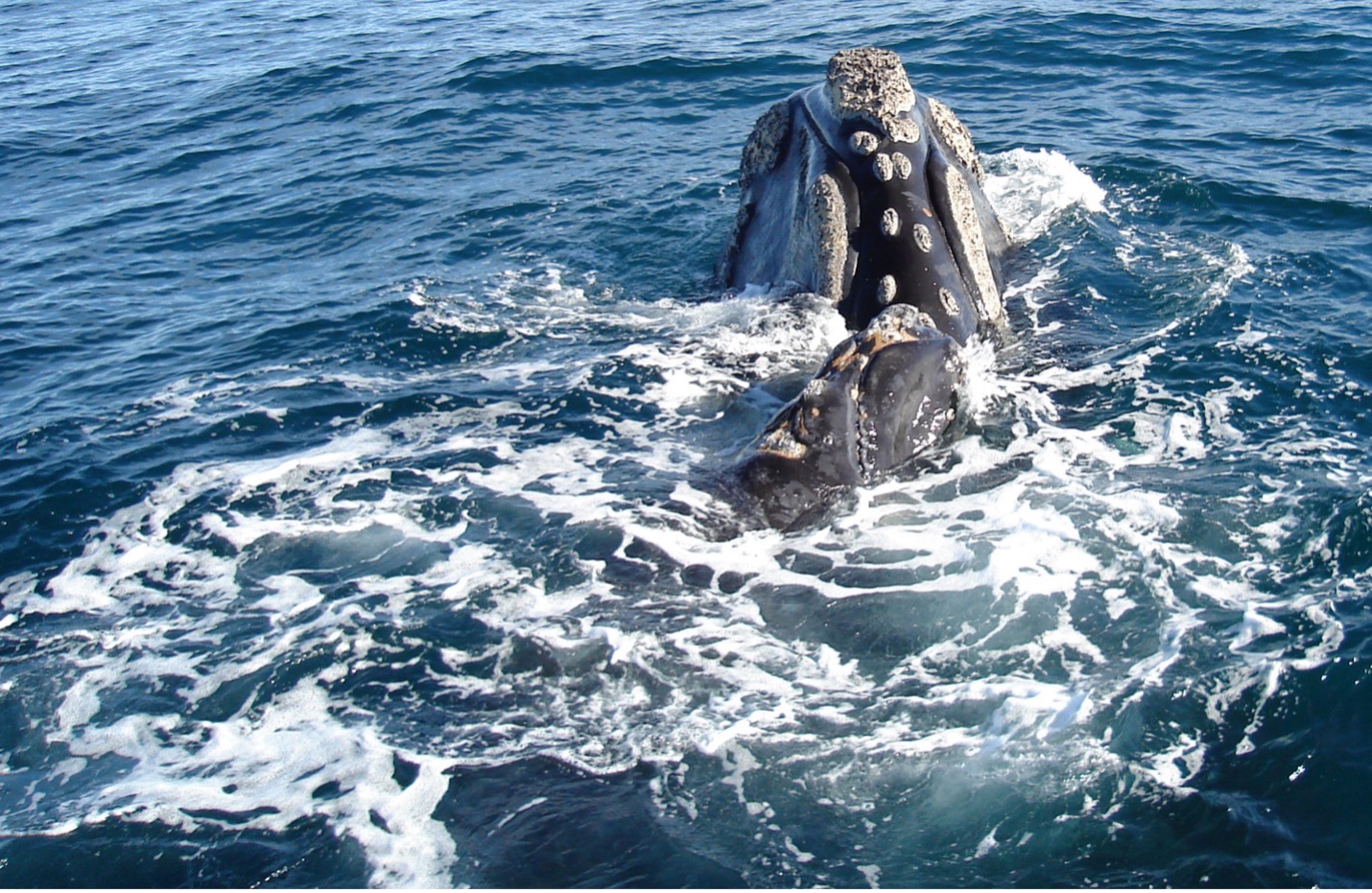 The right whales of Chile and Peru are remnants of a unique and highly depleted population that urgently needs the implementation of effective protection measures to avoid extinction. Photo: C. Poduje/Cetacea Conservation Center
The right whales of Chile and Peru are remnants of a unique and highly depleted population that urgently needs the implementation of effective protection measures to avoid extinction. Photo: C. Poduje/Cetacea Conservation Center
Origin of Chilean and Peruvian right whales
Right whales got their name because they were the suitable species to kill. Their coastal behavior, slow swimming, and abundant blubber made them the perfect target for ancient Basque hunters as early as the 5th century. By the 18th century, European and North American populations of right whales had significantly declined. The discovery of the Chilean/Peru population in the late 1790s led to a stampede of foreign whaling ships. By 1850, the species had practically disappeared and had not shown recovery signs.
The number of occasional records and the lack of biological samples maintained the scientific knowledge about this population minimal until 2017 when CCC attended the stranding of an adult male dead due to entanglement in fishing gear (Carelmapu, Los Lagos region). The team obtained the first tissue sample for genetic determination. The posterior analysis delivered unsuspected results that link this population to the Indo-Pacific (Australia-New Zealand) southern right whales and to the Atlantic population that comes to reproduce off the coast of Argentina, Uruguay, and Brazil.
This data is a wake-up call for countries, the scientific community, and conservationists. It shows that the right whales sighted in Chile and Peru are not the result of the recolonization of whales from other populations in a better state conservation status. Chile and Peru's southern right whales constitute a remnant population, unique and significantly decimated, requiring urgent protection measures to prevent its extinction.
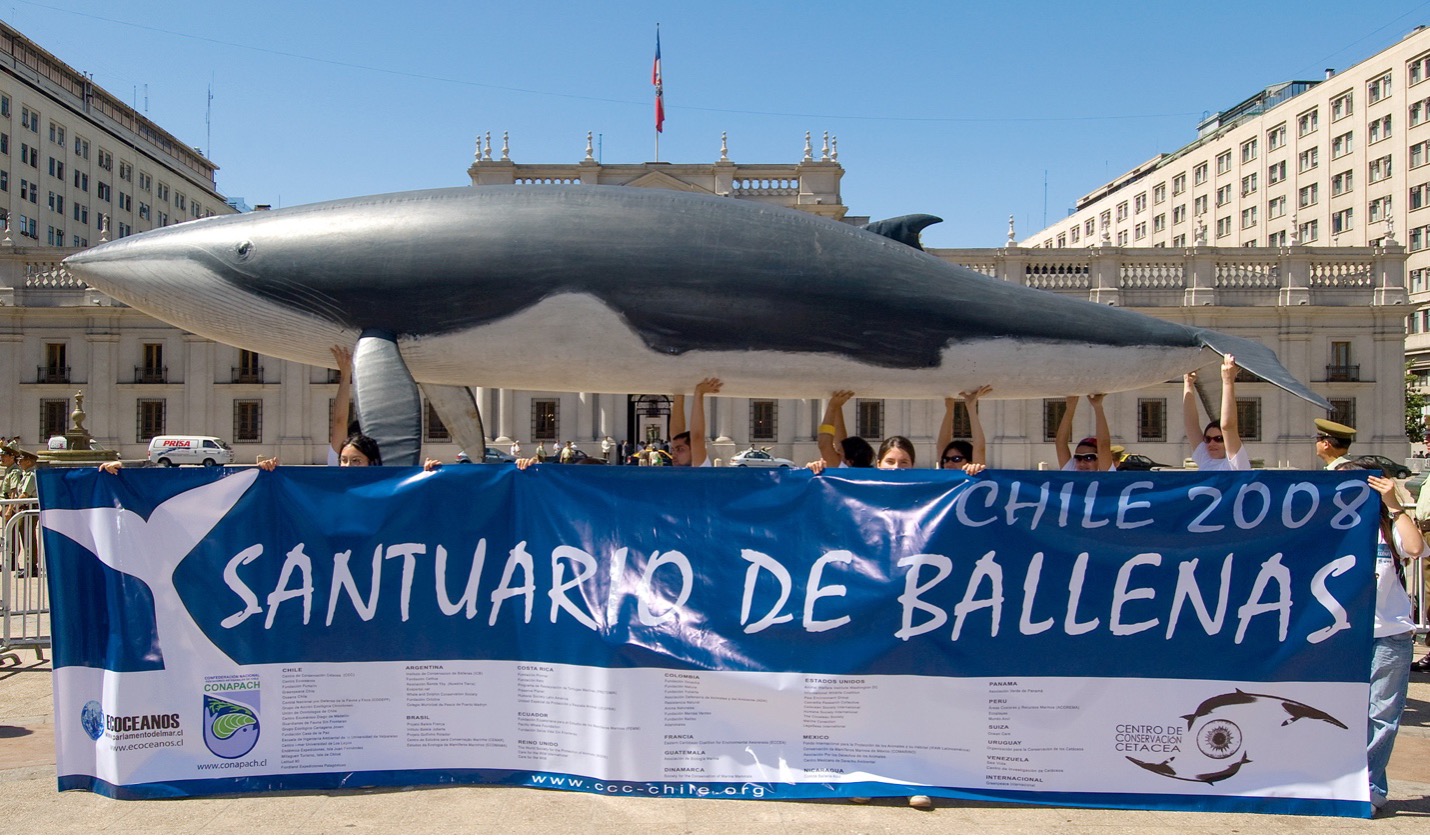 The law for whale sanctuaries establishes the protection of vital spaces for whales, such as the creation of marine protected areas. Photo: Cetacea Conservation Center/Ecoceanos Center
The law for whale sanctuaries establishes the protection of vital spaces for whales, such as the creation of marine protected areas. Photo: Cetacea Conservation Center/Ecoceanos Center
Conservation initiatives
Following the IUCN classification, the International Whaling Commission Conservation Committee (IWC) included the southern right whales of Chile and Peru in its conservation and management Plans. Their purpose is to develop and implement measures to prevent the extinction of critically endangered cetacean species. To strengthen this international effort, Chile and Peru's governments adopted a memorandum of understanding in 2018 to coordinate actions to provide maximum protection to the species in its range.
Additionally, since 2008 all cetacean species in Chile have been protected by Law 20.293, better known as the Chilean Whale Sanctuary Law enacted under the government of President Michele Bachelet after a successful campaign led by CCC, Centro Ecoceanos and the National Confederation of Artisanal Fishermen of Chile (CONAPACH). In addition to permanently protecting them from whaling, article 3(b) of the law establishes "the protection of key spaces for the development of their life cycles, by implementing additional protection measures in breeding sites, mating, parental care, feeding, and migratory routes." To this end, article 3(d) states that "...the creation of coastal marine protected areas shall be encouraged."
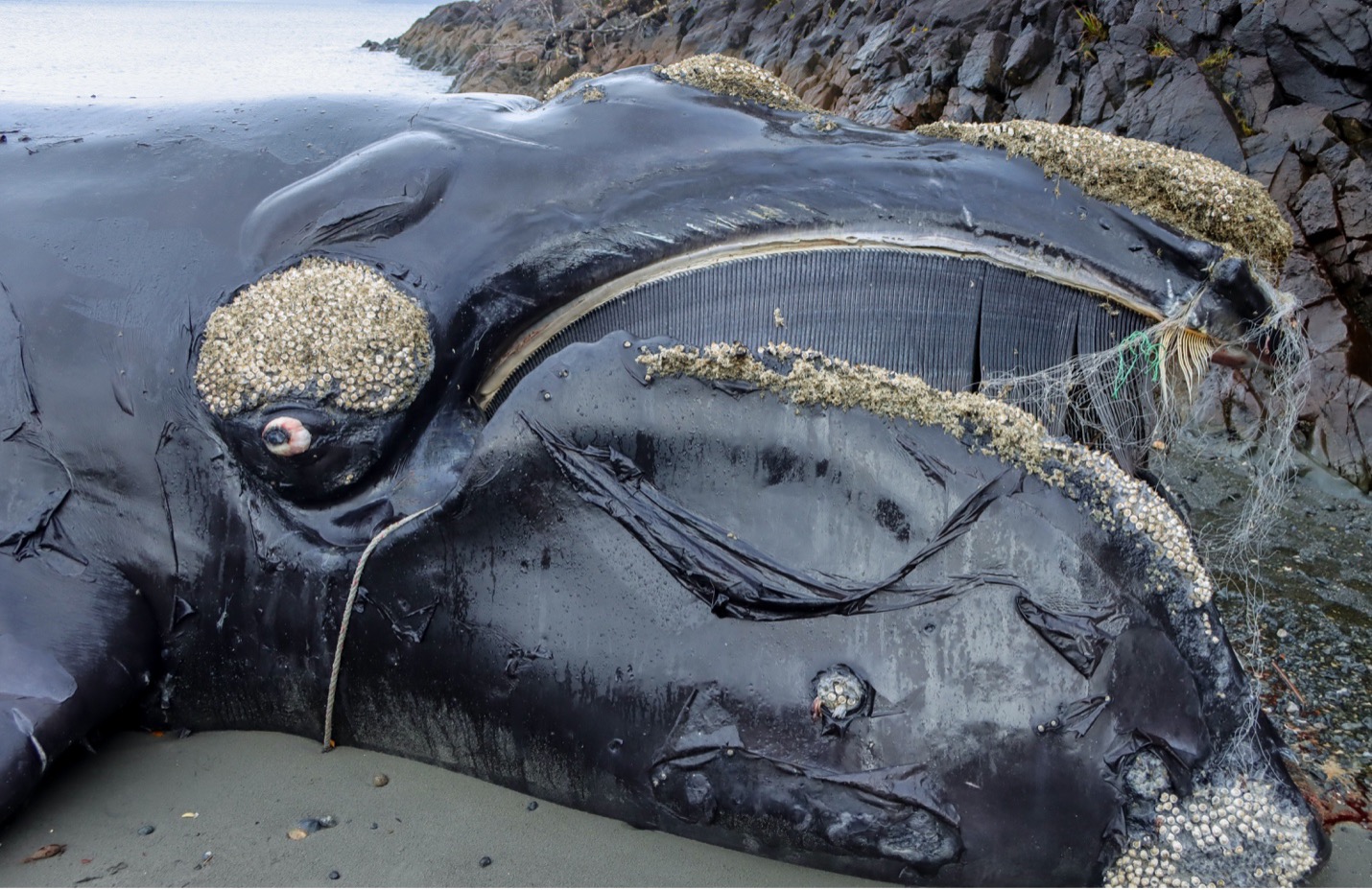 Entanglement in fishing nets and collisions with boats are the main threats to whale conservation globally. Chile is no exception. Photo: B. Galletti/Cetacea Conservation Center
Entanglement in fishing nets and collisions with boats are the main threats to whale conservation globally. Chile is no exception. Photo: B. Galletti/Cetacea Conservation Center
Lethal fishery interactions for southern right whales
The calf recorded in Melinka is the second southern right whale killed by entanglement in artisanal fishing nets. In addition, the calf had several abdominal cuts consistent with the propeller of a marine vessel, suggesting that it may also have suffered a fatal collision. Both entanglements in fishing gear and collisions with vessels are two of the main threats to cetaceans worldwide. Chilean waters are no exception.
The country is one of the leading exporters of marine products globally. In the north and central regions, the main fisheries that interact with whales are pelagic fisheries that use purse seines to catch anchoveta (Engraulis ringens), common sardine (Strangomera bentincki), and jack mackerel (Trachurus murphyi). In the central and southern regions, fisheries use bottom trawls, mid-water trawls, gillnets, traps, and driftnets - although illegal - to capture demersal species.
The main negative interactions between marine mammals and fisheries include entanglement in fishing nets. Three records of southern right whales entangled in fishing nets have been recorded recently. In 2014, an adult individual was spotted entangled swimming near Valparaiso. Despite the efforts made by the Chilean Navy, the National Fisheries Service (Sernapesca), and the CCC to relocate and disentangle the whale, the marine mammal could not be sighted again. In 2017, an adult male died in Carelmapu due to entanglement in fishing gear. Last month (June 2023), a calf died in Melinka, probably for the same reason and with signs of collision with a vessel.
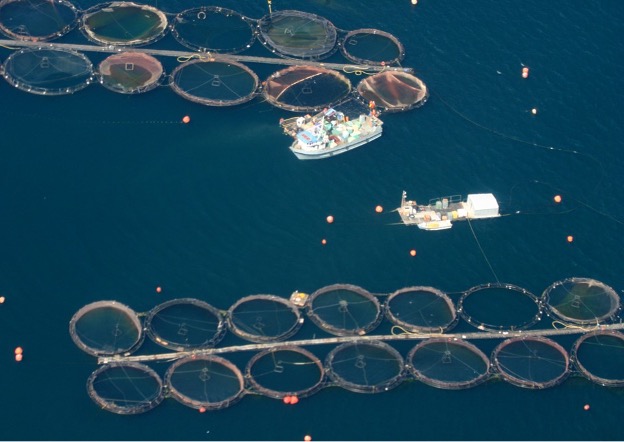 The expansion of marine areas by the salmon farming industry in almost 2000 linear kilometers of coastline in southern Chile generates cumulative processes of chemical and organic contamination, as well as the destruction of critical areas for marine mammals.
The expansion of marine areas by the salmon farming industry in almost 2000 linear kilometers of coastline in southern Chile generates cumulative processes of chemical and organic contamination, as well as the destruction of critical areas for marine mammals.
Expansion of Chile's industrial salmon farming, a growing threat to marine mammals
After mining, industrial salmon farming is the second most important activity in the Chilean economy, with nearly 1,400 concessions distributed between 41ºS and 54ºS. The country is the world's second-largest producer of salmonids after Norway. Between 1990 and 2020, this mega industry increased its production volumes by 3,600% due to an aggressive and poorly regulated territorial expansion strategy in Chilean Patagonia's coastal areas, including marine protected areas.
The industrial occupation of almost 2,000 linear kilometers of coastline has generated cumulative organic and chemical pollution processes. Furthermore, the infrastructure associated with salmon farms, such as cage rafts, pontoons, ports, floating docks, fuel supply terminals, anchorages, mooring lines, buoys, and nets to repel sea lions, systematically destroys these unique and vulnerable areas. It also turns them into death traps for dolphins, whales, and other marine mammals. Similarly, the rise of maritime transport associated with salmon farming affects cetaceans' migratory routes and movement patterns, increasing one of the greatest threats to these marine mammals: vessel collisions.
All these threats were clearly stated in a report by the southern right whale expert workshop held in 2022 under the Conservation and Management Plan of the IWC. The report highlights the habitat degradation, chemical pollution, and increased maritime traffic associated with salmon farming as emerging and severe threats to the conservation and recovery of the remaining southern right whales in Chilean waters.
Consequently, the Ministry of Economy's projection to increase Chilean salmonid production to 1.2 million tons per year, mainly in the Aysen and Magellan regions, will mean a substantial proliferation of the threats generated by this industry on endangered species that populate the Patagonian maritime territory, including Chile/Peru's right whales.
Fishing, intensive salmon farming, and whales: implications for the US Marine Mammal Protection Act
In 2016 the U.S. government ruled, under the Marine Mammal Protection Act, that fishing countries exporting products to the U.S. market must comply with that country's protection standards for these species. As of 2024, the Chilean State must certify that its fishery and aquaculture products exported to the USA do not cause harm to pinnipeds, phocidae, mustelids, and cetaceans in Chilean waters.
Currently, 46 fisheries and three salmonid productions from Chilean waters are classified by the U.S. National Oceanic and Atmospheric Administration (NOAA) in the "export" category. As of January 1st, 2024, the Chilean government and the companies involved must demonstrate to consumers, the market, and U.S. authorities that their environmental and production standards do not threaten marine mammals in their areas of operation.
However, the number of dead marine mammals in general, and of southern right whales in particular, that die in fishing gear and due to interactions with industrial salmon farming activities constitutes a valid "red list" that reflects the seriousness of the problem. The urgency to advance in improving the standards of both industries is evident. Not only to comply with the requirements of the U.S. government to avoid trade sanctions on Chilean fishery exports but also to meet the conservation objectives established in the law that created the Chilean whale sanctuary.
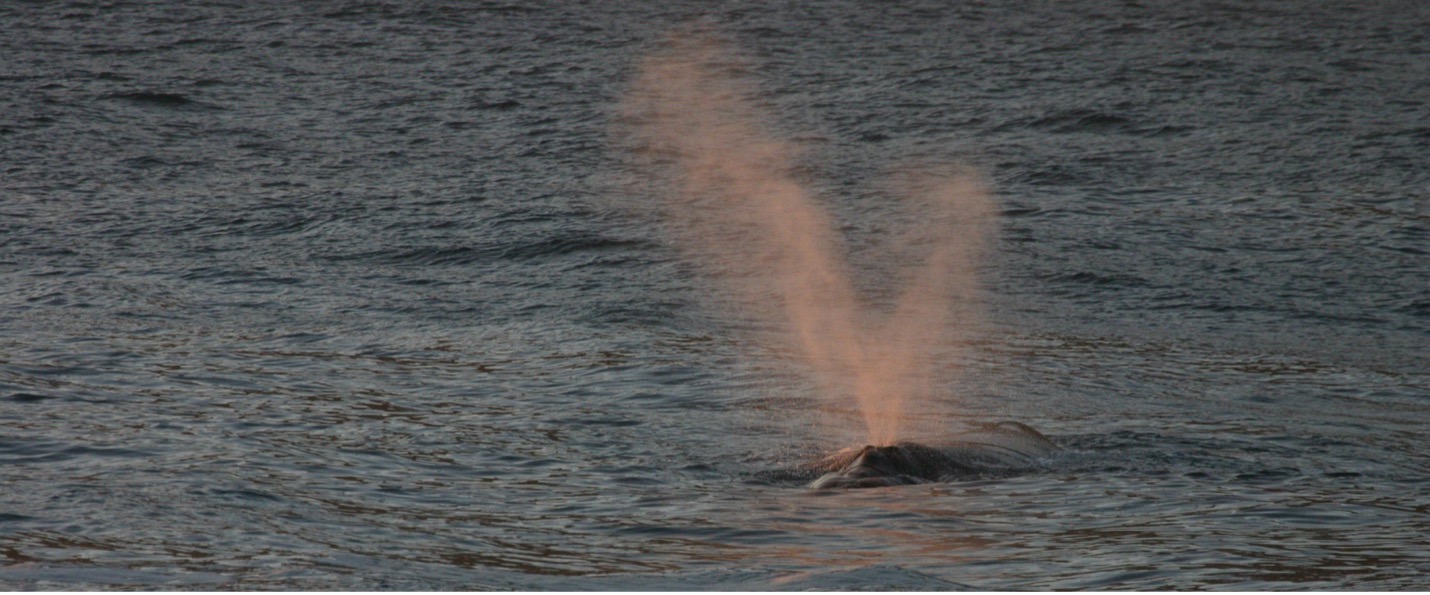 Right whales in the southeastern Pacific could be the first whale species to become extinct in the Southern Hemisphere due to the negligence of the Chilean state. Photo: E. Cabrera/Cetacea Conservation Center
Right whales in the southeastern Pacific could be the first whale species to become extinct in the Southern Hemisphere due to the negligence of the Chilean state. Photo: E. Cabrera/Cetacea Conservation Center
Vanishing southern right whales
The results of the research conducted by the CCC during the last decades reveal that southern Chile has a critical presence of southern right whales. Accordingly, it is imperative to adopt protection measures to provide them with opportunities to fulfill their life cycles and avoid extinction.
However, the current context of aggressive expansion of industrial salmon farming operations and destructive fishing activities, monitored by Centro Ecoceanos since 2000, undermines international and binational conservation efforts to recover this unique southern right whale population. It also violates the measures established in Chile's Cetacean Protection Law or whale sanctuary law.
The Chilean state urgently needs to assume its legal responsibility and resolve the fishing and aquaculture industries' lack of monitoring and control. Otherwise, we could become witnesses to the first case in the 21st century of the extinction of a whale species in the Southern Hemisphere due to governmental negligence.
Fifteen years after the creation of the Chilean whale sanctuary, all indicate that now is the time to avoid this catastrophe and take the necessary steps to ensure true and efficient compliance with the whale protection measures established under Chile's national law.
